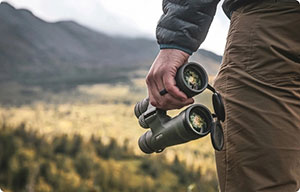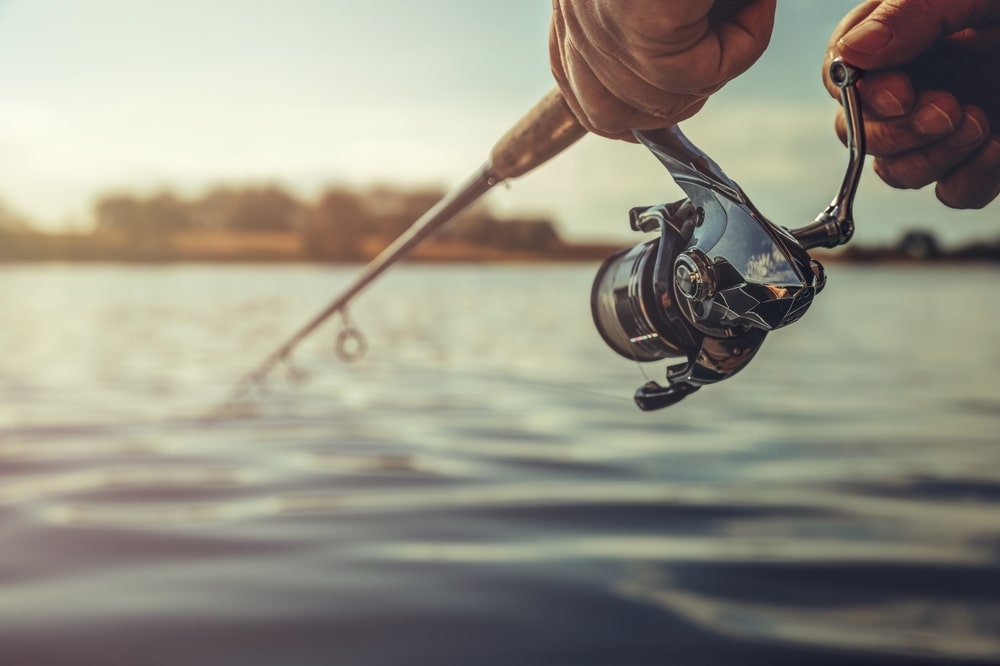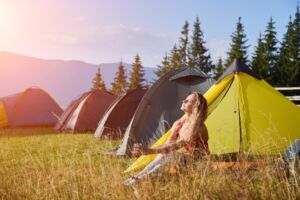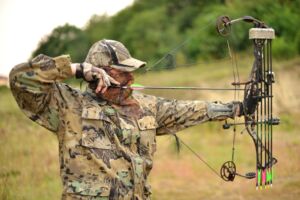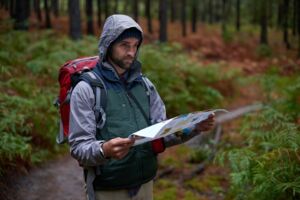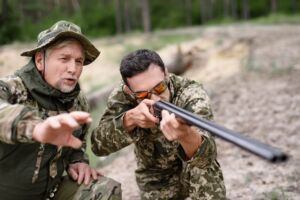Alberta’s vast and varied aquatic landscapes, from the pristine mountain streams to the expansive northern lakes and prairie reservoirs, are an angler’s dream. With an incredible diversity of fish species and opportunities for every style of fishing, our province is a world-class destination for anyone looking to cast a line. This comprehensive Alberta Fishing Guide is designed to equip you with the knowledge needed to embark on a memorable angling journey, whether you’re targeting trophy pike, elusive trout, or the abundant walleye.
Table of Contents
The Allure of Fishing in Alberta
What makes Alberta a standout destination for anglers? It’s the sheer breadth of opportunity, combined with a strong commitment to aquatic conservation. The province’s waterways teem with vibrant fish populations, supported by responsible management practices and a dedicated community of conservationists. From the thrilling fight of a large northern pike to the delicate dance of fly-fishing for cutthroat trout in a clear mountain creek, Alberta provides a canvas for countless unforgettable moments. Beyond the excitement of the catch, fishing here offers tranquillity, a deep connection to nature, and the chance to witness Alberta’s breathtaking scenery from a unique perspective.
Understanding Alberta’s Fishing Regulations and Licensing Requirements
Successful and responsible angling in Alberta begins with a thorough understanding of the rules and obtaining the necessary permissions. These regulations are designed to sustain fish populations and preserve the aquatic ecosystems for future generations.
Obtaining Your Fishing License
Every angler aged 16 to 64 who is not an Alberta resident aged 65 or older or a First Nations person must possess a valid Alberta Sportfishing License to legally fish in the province.
- Wildlife Identification Number (WIN): This is your unique, lifetime identifier. It’s the first step to purchasing any fishing license in Alberta. If you don’t have one, you’ll need to acquire it through the AlbertaRELM system, either online or through an authorized vendor.
- Sportfishing License Types: The Annual License is valid from April 1st to March 31st of the following year, while a Limited Duration License is available in a 1-day or 7-day increment, making it ideal for short trips or visiting anglers.
- Special Harvest Licences (SHLs): For certain species, most notably Walleye in specific waterbodies, a Special Harvest License may be required in addition to your general sportfishing license. These are often allocated through a draw system, similar to hunting draws, due to limited quotas. It’s important to verify the specific regulations for the body of water you plan to fish in.
- Where to Purchase: Licences are readily available online through the AlbertaRELM website or mobile app, and at private license issuers across Alberta, including Storm Mountain Outfitters. Ensure you have your WIN card ready when purchasing.
The Alberta Guide to Sportfishing Regulations
This annual publication is your ultimate reference for all provincial fishing rules. It is absolutely essential to review the most current version before heading out, as regulations can change year-to-year. Key elements to pay close attention to include:
- General Seasons: Dates when certain species are open for harvest.
- Waterbody-Specific Regulations: Many lakes, rivers, and streams have unique rules regarding seasons, size limits, and possession limits due to local fish population dynamics. These are listed by “Fisheries Management Zone” and then by individual water body.
- Possession Limits: The maximum number of fish of a certain species you can have in your possession (Including those at your campsite or home).
- Size Limits: Minimum or maximum lengths for fish you can keep. Some species may have slot limits, meaning only fish within a specific size range can be retained.
- Bait Restrictions: Rules regarding what can and cannot be used as bait, including restrictions on live bait fish, natural bait, and artificial lures.
- Gear Restrictions: Limitations on the number of lines, types of hooks, or use of specific fishing methods (e.g., fly-fishing only zones).
- Species at Risk: Awareness of protected species, such as bull trout or Athabasca rainbow trout in certain areas) where catch-and-release is mandatory or specific handling rules apply.
- Closed Seasons/Areas: Waterbodies or sections of waterways that are closed to fishing entirely or for specific periods to protect spawning fish or sensitive habitats.
The responsibility for knowing and adhering to these regulations rests with the angler. Ignorance of the rules is not an excuse for violations.
Prime Fish Species to Target in Alberta
Alberta’s waters are home to a diverse array of game fish, offering exciting opportunities for anglers with different preferences and skill levels.
Trout Species
Alberta is renowned for its trout fishing, particularly in the foothills and mountain regions.
- Rainbow Trout: Widely distributed and popular for their spirited fight. Found in many stocked lakes and wild populations in various rivers.
- Brown Trout: Known for their elusive nature and often larger size. Primarily found in rivers and streams, offering a challenging pursuit for fly anglers.
- Brook Trout: Often found in smaller, colder streams and high-elevation lakes. They’re aggressive biters, which makes them popular with both bait and fly fishers.
- Cutthroat Trout: Native to western Alberta, often identified by the red “cut” mark under their jaw. These are highly sensitive to habitat changes and are often managed as catch-and-release.
- Bull Trout: Alberta’s provincial fish, and a threatened species in many areas. Bull trout is a protected species that must be released immediately with care. It’s found in cold, clear mountain rivers and lakes.
- Lake Trout: The apex predator of many deep, cold northern lakes, the lake trout can grow to impressive sizes and offer a powerful fight.
Pike and Walleye
These two species are kings of many of Alberta’s larger lakes and reservoirs.
- Northern Pike: Aggressive and predatory, pike offer explosive strikes and intense fights. Found throughout the province in lakes, rivers, and sloughs, they are a popular target for their size and abundance.
- Walleye: Highly prized for their delicious taste and challenging nature, walleye are found in many central and northern lakes and reservoirs. They’re often managed with strict size and possession limits, and frequently require Special Harvest Licences.
Other Popular Species
- Yellow Perch: A common and accessible species, yellow perch is great for beginners and families. It’s found in many lakes and reservoirs, often schooling in large numbers.
- Burbot: Often called freshwater cod, burbot is a bottom-dwelling fish that’s active in colder months and can be caught through the ice.
- Whitefish: Whitefish are excellent for eating. Found in both cold-water lakes and rivers, they can be a fun target on light tackle or fly gear.
- Goldeye and Mooneye: Found in slower-moving rivers, particularly in the central and northern regions, goldeye and mooneye are known for their energetic fights on light tackle.
- Sturgeon: The might lake sturgeon is a prehistoric giant found in larger river systems. They’re a protected species in Alberta and are catch-and-release only.
Top Fishing Destinations Across Alberta
Alberta’s vastness means incredible diversity in fishing locations. Here’s a glimpse into some renowned spots and types of waters.
Mountain and Foothills Regions
- Bow River (near Calgary): Internationally recognized as a world-class trout fishery, particularly for brown and rainbow trout. Many sections are fly-fishing only or catch-and-release. Access points are plentiful.
- Oldman River & Crowsnest River (Southern Alberta): Excellent for various trout species, offering picturesque mountain angling experiences.
- Cascade Ponds (Banff National Park): Easily accessible, often stocked, and great for family fishing. Please note that a National Park fishing permit is required here.
- Lake Minnewanka (Banff National Park): Deep, cold lake with lake trout and whitefish. Motorized boats are allowed with a permit.
Central and Northern Lakes and Reservoirs
- Pigeon Lake & Gull Lake: Popular destinations for walleye, pike, and perch. Known for strong populations and active fisheries.
- Lac La Biche: A large lake offering excellent opportunities for walleye, pike, and burbot.
- Cold Lake: One of Alberta’s deepest lakes, renowned for its large lake trout, as well as pike and walleye.
- Slave Lake: Alberta’s largest lake, known for its trophy walleye and pike fishery.
- Various Reservoirs (e.g., Crawling Valley, Newell, McGregor): These large prairie reservoirs offer productive fishing for walleye, pike, and perch, often with good boat launch facilities and surrounding amenities.
River Systems
- North Saskatchewan River (Edmonton Area): While flowing through urban areas, it offers surprising fishing opportunities for pike, walleye, goldeye, burbot, and even sturgeon (catch and release).
- Athabasca River: A major northern river system, home to pike, walleye, and various whitefish species.
- Peace River: Large, powerful river in the north, offering substantial fishing for pike, walleye, and sturgeon.
Stocked Ponds and Lakes
The Alberta Conservation Association (ACA) and the Government of Alberta regularly stock numerous smaller lakes and ponds across the province with rainbow, brook, brown, and tiger trout. These “stocked pond” programs offer easily accessible fishing opportunities, often located close to urban centers, and are ideal for beginners or those seeking a quick fishing fix. Check the ACA website for an interactive map of stocked lakes.
Essential Gear for Your Alberta Fishing Adventure
Having the right equipment significantly enhances your comfort, safety, and overall success on the water.
Rods, Reels, and Line
- Variety is Key: Depending on your target species and fishing style (spin, baitcasting, fly), you’ll need appropriate rods and reels. A medium-action spinning rod is versatile for many species in Alberta.
- Line Strength: Match your line strength to the fish you’re targeting—heavier line for pike and lake trout, lighter line for panfish or delicate trout presentations.
- Spare Spools: Handy to have different line types or weights ready.
Lures, Baits, and Tackle
- Tackle Box Essentials: A well-organized tackle box with a variety of lures (spoons, spinners, crankbaits, jigs), hooks, sinkers, swivels, and leader material.
- Bait Options: PowerBait for stocked trout, various soft plastics, worms, or dead baitfish (where permitted and purchased legally) for pike and walleye. Always check bait regulations for your specific water body.
- Fly Fishing Gear: For the fly angler, a selection of flies (dry flies, nymphs, streamers) matching local insect hatches, an appropriate fly rod and reel, and waders.
Personal and Safety Gear
- Layered Clothing: Alberta weather can change quickly. Pack layers, including waterproof and windproof outer shells, even in summer.
- Footwear: Waterproof boots or waders if you plan to wade.
- Sun Protection: Hat, sunglasses (polarized are excellent for spotting fish and reducing glare), and sunscreen.
- Insect Repellent: Essential, especially near water.
- First-Aid Kit: For minor cuts, scrapes, and other emergencies.
- Bear Spray: Absolutely necessary if fishing in bear country. Know how to use it!
- Navigation: GPS or map and compass, especially if venturing into remote areas.
- Communication: Cell phone (signal can be spotty), satellite phone, or two-way radio for remote locations.
- Headlamp/Flashlight: With extra batteries.
Fish Handling and Processing
- Landing Net: Rubberized mesh nets are best for fish health, especially for catch-and-release.
- Pliers/Forceps: Essential for safely removing hooks.
- Scale and Measuring Tape: For checking size limits.
- Stringer/Cooler: If you plan to retain fish, have a way to keep them fresh.
- Fillet Knife: For processing your catch.
Guided Fishing Trips and Outfitters
For those new to Alberta or seeking a specialized experience, a guided fishing trip can be a great way to get acquainted with Alberta’s waters.
The Benefits of a Guided Trip
- Local Knowledge: Guides possess intimate knowledge of the best fishing spots, current conditions, and fish behaviour.
- Expert Instruction: Learn new techniques, improve your casting, or get tips on specific species.
- Equipment Provided: Most outfitters provide high-quality rods, reels, and tackle, eliminating the need for you to bring your own.
- Safety and Logistics: Guides handle all the logistics, including transportation, boat handling, and safety protocols.
- Access: Guides often have access to private waters or specialized permits for certain areas.
- Increased Success: A guide’s expertise significantly increases your chances of a productive and memorable day on the water.
Conservation and Responsible Angling
Fishing in Alberta is a privilege, and anglers play an important role in maintaining healthy fish populations and pristine aquatic environments.
Catch-and-Release Best Practices
For species that are protected, under strict limits, or simply for personal preference, proper catch-and-release is vital.
- Minimize Fight Time: Land the fish as quickly as possible without over-stressing it.
- Use Barbless Hooks: They are easier to remove and cause less damage.
- Handle with Care: Keep the fish in the water whenever possible. Wet your hands before touching it to protect its protective slime layer.
- Support the Fish: Support its body horizontally, especially larger fish. Avoid holding by the gills or jaw if possible.
- Revive Gently: If the fish seems stressed, hold it gently in the water, facing into the current, until it regains strength and swims away on its own.
Protecting Aquatic Ecosystems
- Prevent Invasive Species: Clean, Drain, Dry! Always clean your boat, gear, and waders thoroughly between water bodies to prevent the spread of aquatic invasive species, such as Whirling Disease or Zebra Mussels.
- Respect Riparian Areas: Stay on designated trails, avoid disturbing vegetation along shorelines, and refrain from littering.
- Proper Waste Disposal: Pack out all trash, including fishing line and bait containers.
- Adhere to Regulations: Follow all size, possession, and bait regulations to support sustainable fisheries.
Contributing to Conservation
A portion of your fishing licence fees directly supports fish management, habitat restoration, and conservation efforts in Alberta. Consider supporting organizations like the Alberta Conservation Association (ACA) or local fish and game clubs that actively work to improve angling opportunities and protect fish habitat.
Maximizing Your Alberta Fishing Experience
Beyond the technical aspects, embracing the broader experience is key to an unforgettable fishing trip.
Planning Your Trip
- Research: Consult the Alberta Fishing Guide to Sportfishing Regulations, online forums, and local bait shops for up-to-date information on conditions and hot spots.
- Timing: Consider the seasons (spring for open water, summer for peak action, fall for trophy fish, and winter for ice fishing) and the time of day (dawn and dusk are often prime).
- Flexibility: Alberta weather can be unpredictable. Have backup plans or alternative locations in mind.
Techniques and Tips
- Match the Hatch (Fly Fishing): Understand what insects are active and choose your flies accordingly.
- Depth and Structure: Fish often relate to underwater structure (drop-offs, weed lines, humps). Use electronics if available.
- Patience: Fishing requires patience. Enjoy the process, the scenery, and the anticipation.
- Learn from Locals: Don’t be afraid to ask experienced local anglers or bait shop staff for advice.
Capture the Memories
- Photography: Bring a camera to capture your catches and the stunning Alberta landscapes. Practice responsible photo techniques (quick shots, fish in water).
- Journaling: Keep a fishing journal to record locations, conditions, baits used, and catches. This helps you learn and remember past successes.
Casting a Line in Alberta’s Rich Waters
Fishing in Alberta is more than just a pastime; it’s an opportunity to connect with the province’s breathtaking natural heritage. From the thundering power of mountain rivers to the tranquil beauty of prairie lakes, every cast offers the promise of adventure and discovery. This Alberta Fishing Guide has aimed to provide you with a comprehensive overview, from navigating licenses and understanding species to selecting gear and practicing vital conservation principles.
Whether you’re a seasoned pro seeking a new challenge or a family looking to create cherished outdoor memories, Alberta’s diverse fisheries await. Equip yourself with knowledge, respect the environment, and embrace the thrill of the catch. The waters of Alberta are calling, promising not just fish, but stories that will endure for a lifetime.
Need some help planning your next fishing adventure? We’d love to help! Visit us in store or contact Storm Mountain Outfitters.

